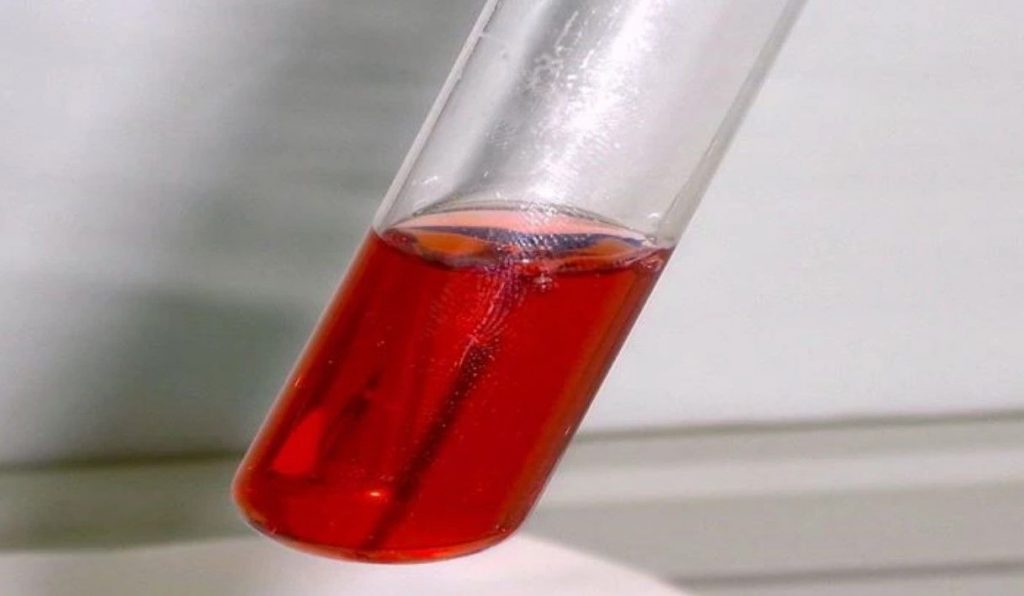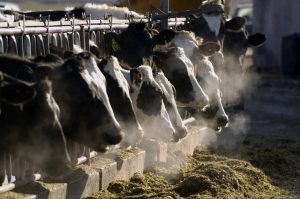The milk is rich in easily digestible nutrients and provides highly nutrient diet. The world population is increasing day by day which creates an alarming situation for the adequate supply of the milk to each individual along with the optimum quality of the product. It is a highly perishable commodity hence; it should be consumed within a definite span of the time or otherwise should be preserved with a suitable preservative.
In today’s world, there are a lot of traders or vendors re there which are indulged in the fraudulent practices of milk sale by addition of various substances termed as “adulterants” with a purpose of making economic gain. The term adulterant refers to the substance which is intentionally added to the lot with an inherent aim of debasing the equality of the final product. The food adulteration refers to the act of intentionally debasing the quality of the food offered for sale either by admixture or substitution of inferior substance or by removal of some ingredient also. It takes into account only intentional not incidental. The adulteration of the milk and milk products is directly proportional to the demand and supply principle which is ultimately connected with the economic principle. The adulteration of the milk is punishable under section 420 of Indian Penal Code. These adulterants will increase the solid content of the milk and thus provide more economic gain to the sales person. The most common adulterants along with their detection methods are described in this section.
Reduction of the fat: The reduction of the fat can be achieved via two ways:
Addition of the water: It is the most common fraudulent practice being followed in Indian context by the milkman. They do so to increase the amount of the product but the quality of the water is always doubtful. The water may carry a lot of the harmful microbial and bacterial contaminants which affects public health. The presence of the water in the milk can be detected by following methods-
Measurement of the specific gravity: The specific gravity of the milk will decrease on the addition of the water content in the milk which proves to be a better indicator of the adulteration of the milk. The specific gravity has been determined by the Quevenne’s lactometer. The normal specific gravity of the cow milk is 1.028 – 1.030 while of the buffalo milk is 1.030-1.032. The lower specific gravity indicates addition of the water in the milk.
Nitrate test: The water always carries nitrate ions in its composition while the milk is deficit in it. The nitrate can be detected by the diphenylalanine test. The nitrate ion is present in large amount in polluted water samples. The method consists of the addition of 1ml of the diphenylalanine along with 100 ml of the sulphuric acid which is poured slowly along the walls of the test tube in 5 ml of the milk. Mix all the contents slowly and wait for the color appearance. The blue color at the junction of the sulphuric acid and milk indicates the presence of the nitrate ions in the milk which indicates the adulteration of the milk with the water.
Determination of freezing point: The freezing point of the normal milk gets lower down when water is added in it. Actually, the freezing point of any solution depends upon the presence of the solutes in the milk. The solute concentration after the addition of the water will decrease which leads to the decrease in the freezing point of the milk. The normal freezing point of the milk is 0.5470C. The freezing point of the milk can be detected with the help of the Hortvet cryoscope equipment. The percentage of the added water(W) can be calculated using the following formula,
W = 100(T-T’)/T, where, T is the average freezing point of the normal milk(0.5300CC) and T’ is the true freezing point of the given sample.
Skimming of the milk: The term skimming refers to the removal of the fat content from the milk. The fat is lighter than water, thence the specific gravity of the milk increases. The fat content of the milk can be detected using
Babcock test: It is less costly as compared to above method and more accurate. It depends upon the action of the sulphuric acid on the milk proteins. The heating and centrifugation cause the fat to separate and float as a separate layer on the top of milk column. The procedure has been carried out in Babcock bottle.
Rose-Gottileb test: In this, the milk sample is treated with the ammonia and ethyl alcohol. The ammonia causes the dissolution of the protein while the ethyl alcohol causes the precipitation of the proteins. The fat is extracted with the diethyl ether and petroleum. This method is mainly used for milk products and as reference method.
Adam’s method: This method consists of the spreading the milk on an absorbing paper and then extracting the fat from it by a fat solvent through a process of distillation.
Skimming and watering: In this adulteration method, the fat is removed and sufficient water is added to the milk to make the specific gravity at a normal level. The skimming of the milk has also been done to extract the cream separately and fetching the double profit from it. For determining the above adulteration, we usually employ the calculation of the corrected lactometer reading followed by application of the specific formulae for TS% determination, such as
Richmond %TS: 0.25G+1.2F+0.14
Babcock : 0.25G+1.2 F
Fleischman’s : 0.25G+1.2F+0.25
Where, G is corrected lactometer reading and F% is fat percentage.
Addition of thickening agents:
The thickening agents leads to increase in the viscosity of the milk. The various thickening agents are cane sugar, starch, gelatin, calcium carbonate and milk powder etc. to increase the solid content of the milk.
Detection of the Starch: The starch is a homopolysaccharide which is having high specific gravity. It can be detected by addition of the 1.0 ml of the 5% solution of the iodine. If starch is present in the milk sample, the iodine molecules get chelated with starch pockets. It yields blue color complex formation.
Detection of gelatin: The gelatin is added to the milk asa thickener. Take 10 ml milk in a large test tube along with the 10 ml of the mercuric nitrate solution in the same test tube. Shake the test tube well. Add 20ml of the water and shake the mixture and wait for 5 minutes. Then after filter the solution and obtain the opalescent filtrate which indicates the presence of the gelatin. Collect this filtrate in the separate test tube and equal amount of the saturated picric acid solution. Wait for 2 minutes, it yields yellow precipitate which indicates the appreciable amount of the gelatin.
Detection of the Cane sugar: Take about 15 ml of the milk sample in a sterile clean test tube and add 1ml of the HCl along with 0.1 g of the resorcinol powder in the same test tube. Boil the solution for a few minutes. The presence of the cane sugar is indicated by the development of the red color.
Detection of the sucrose: The presence of the sucrose can be detected by the help of the resorcinol test. It involves the addition of 0.1 g of the resorcinol to the 10ml of the milk. Shake the test tube mixture and wait for some time. The red color of the test tube will show the presence of the sucrose.
Detection of the milk powder: the milk powder has been added to the milk. The milk powder has been added to increase the SNF content of the milk. We start with the 10 ml of the milk in a test tube followed by addition of 1 drop of the formalin in the test tube. Mix it well and incubate the test tubes at 600C for approximately 10 minutes. The presence of peculiar odor indicates the presence of the milk powder in the test sample. In negative control, there will not be any such odor.
Detection of the Calcium carbonate: Calcium carbonate is a chemical which is mainly used as bleaching agent in the farms and it has a caustic action on live tissues. We proceed for its detection by taking10 ml of the milk in a test tube followed by addition of 1 ml of the concentrated hydrochloric acid in it. The presence of the calcium carbonate has been indicated by the presence of the effervesces.
Detection of the sodium carbonate(rosalic acid test): It is named as rosalic acid test after the name of the indicator rosalic acid. First of all, take 5 ml of the milk sample in a test tube, then after we have to add 10ml of the alcohol and rosalic acid solution(1:10) and mix it well. The sodium carbonate acts as acidity neutralizers in the solution. The end result of the pink color for the mixture indicates the presence of the sodium carbonate in the milk sample.
We can also go along with the modified method in which we have to do the manual shaking of the test tube after addition of the rosalic acid in it.
Detection of the urea/synthetic milk: The urea is present in traces in natural milk but it constitutes a major part in the synthetic milk formulations which is above the prescribed leveland cause toxicological hazards to the consumers. The detection of the urea can be carried out of any methods-
Using DMAB&TCA method: Take equal amount of milk and 24% TCA(tricholoroacetic acid) in a glass stoppered test tube. Mix it and filter it with Whatman no.42 filter paper. Take 3 ml of the filtrate in another test tube and add 3ml of 1.6% dimethylamino-benzaldehyde reagent. The sample positive for urea indicates the distinct yellow color while slight yellow indicates negative.
Using DMAB reagent: Take 1ml of the milk in a test tube. Add 1ml of 1.6%(w/v) DMAB reagent and mix it well. The distinct yellow color indicates the urea addition to the milk sample while slight yellow color is negative for urea test.
Detection of sulfate salts: The presence of the sulfate salts(Zinc sulfate, ammonium sulfate, magnesium sulfate etc.) to raise the SNF of the milk have been carried out using the barium chloride. The reagents include the barium chloride and TCA. Take 10 ml of the milk sample in a test tube of 50 ml capacity. Add 10ml of TCA solution in it. Filter the coagulated milk through Whatman filter paper grade 42. Take 5 ml of the clear filtrate and add few drops of the barium chloride solution. Observe for any visible ppt. in the milk. The positive sample shows the formation of the milky-white precipitates.
Detection of hydrogen peroxide: The hydrogen peroxide is a preservative but as per FSSAI rules, it is not permitted to be added in the milk. Hence, if it is present in the milk, then, it is said to be adulterated. The reagents needed for its detection include para-phenylenediamine reagent(2.0%). Take about 2.0 ml of the milk in a test tube and add 2.0ml of the raw milk in a test tube. Add 2 drops of the 2.05 of para-phenylenediamine reagent. Mix it well and observe for blue color for positive samples and white color for pure milk sample.
Detection of detergent in the milk: Take 5 ml of the milk sample and add 0.1ml of bromocresol purple solution (0.5%) in it. Mix the solution. The violet color of the test tube solution indicates the presence of the detergent in the milk while faint violet indicates the negative result.
Detection of saccharin: The saccharin is a sugar which has sweet taste and it has been added in the flavored milk and milk products mainly. First of all, we have to Curdle the aliquot of the diluted milk sample with acetic acid. Shake it well and filter it. We have to add 2.0ml of the concentrated HCl to the filtrate to acidify the filtrate and extract it with 25ml of the ether and wash it with 3 consecutive layers of the 5ml water. The ether extract is a volatile compound which can be evaporated by putting in the water bath and add 1-2 drops of water, mix well with glass rod and taste a little. The characteristic sweet taste indicates the presence of the saccharin.
Adulteration of Ghee:
Detection of the vegetable oils:
Take a sample of ghee and add trichloro-methyl in it. Mix it well followed by addition of the acetic anhydride and then-after heat the mixture. The melting point of the unadulterated ghee is 114-1150F while that of adulterated ghee is 1170F.
Detection of the hydrogenated oils(sesame oil):
For this Baudouin test has been carried out. Take a ghee sample and add 2ml of furfural solution in alcohol and HCl(5ml) in it. The crimson red color (after 5 minutes) indicates the presence of the hydrogenated oil(sesame oil) in the ghee. It is helpful in differentiating between desi ghee and vanaspati ghee. The vanaspati ghee contains 5% sesame oil. Pure ghee not contains sesame oil.
The detection of the sesame oil , refined soyabean oil, groundnut oil and sunflower oil have been done by HPLC as recommended by FSSAI with the limit of detection as follows-
Cocconut oil – 5%
Refined soyabeen oil- 1%
Groundnut oil – 2%
Sunflower oil – 1%
Detection of the animal fat(mutton/beef):
Take the sample of ghee and add a mixture of alcohol and acetate as reagent and heat the mixture. The slight deposition of the crystals at the bottom of the test tube indicates the presence of the mutton or beef fat in the ghee.
Conclusion:
The adulterants are mostly extraneous materials which have been added to the milk or milk products with an aim to increase the economic gain mainly. These are very harmful for certain age groups mainly the young ones and elder group population. They can be detected with various methods as described above which usually have to be carried out by the FSSAI at regular intervals. The adulterants debase the intrinsic quality of the milk and milk products and hence strict legislations needed to be implement over them.
References:
- Azad T. et al., Common milk adulteration and their detection techniques. International Journal of Food Contamination.
- Sharma Ranjan et al., Detection of adulterants in milk – A laboratory manual. National Dairy Research Institute, Karnal.
- Biswas R. et al., Adulteration in Milk – a growing concern. J. Dairy and Veterinary Sciences.
- Sherikar A.T. et al., Textbook of Elements of Veterinary Public Health. ICAR.
- Kamthania M. et al., Milk adulteration: Methods of detection and remedial measures. International Journal of Engineering and Technical Research.
Authors
AMIT KUMAR1, UPENDER2*
1Ph.D. Scholar, Division of Animal Reproduction,
Indian Veterinary Research Institute, Uttar Pradesh, India
2M.V.ScScholar,DivisionofVeterinaryPublichealthandEpidemiology,
IndianVeterinaryResearchInstitute,UttarPradesh,India

















